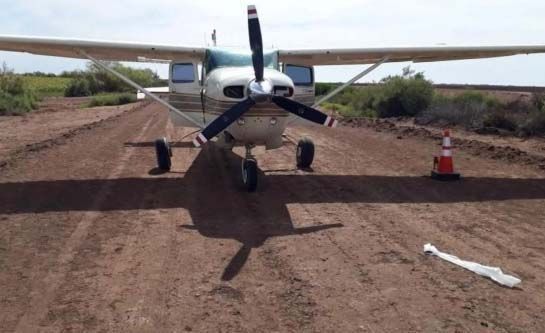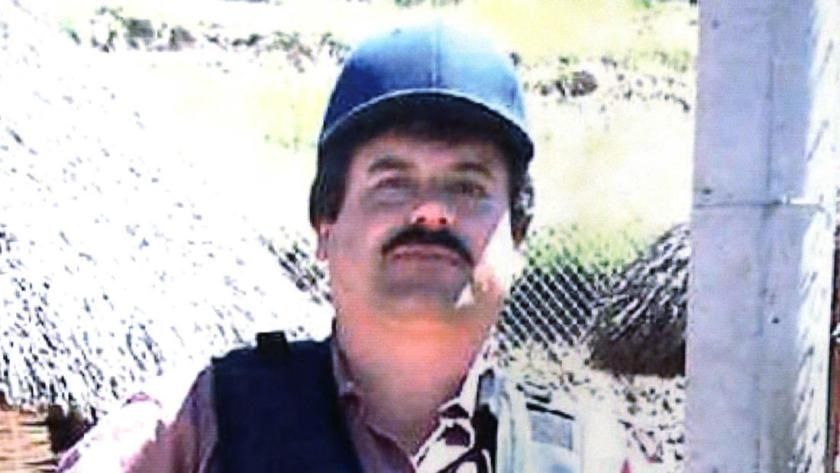This type of aircraft is the favorite of "El Chapo"
"El Chapo" Guzman, led the largest air operation in Mexico before he was captured a second time. 60 of the captured aircraft were precisely Cessna 206.

Mexican authorities confiscated 599 aircraft between 2006 and 2014 that the cartel used to send drugs to the United States and all of Mexico, according to the Mexican Ministry of National Defense. Of the planes that were seized in Culiacán, Navolato, and Ahome, municipalities in the state of Sinaloa, 60 were precisely Cessna 206, the preferred aircraft of "El Chapo" Guzmán.
According to the United Nations Office on Drugs and Crime, and Project AIRCOP in partnership with Interpol and the World Customs Organization, organized criminal groups have long focused on accelerating the transport of drugs and other illicit goods through the use of ships, containers, or aircraft and have been able to transport even greater quantities of drugs around the world.
Minority transportation of cocaine hydrochloride or amphetamines is usually done on commercial aviation flights by people called narcotics traffickers, using double-bottomed suitcases, impregnated clothing and shoes, as well as specially designed vests, or concealed in objects as foreign as wheelchairs, or in the most dangerous form as fingerprints in the stomach or intestines. Always trying to avoid airport and X-ray controls, to transport a few kilos.
Some slightly larger quantities, such as a few dozen kilos, in cargo planes packed with flowers or herbs, hidden in plastic vials of veterinary products, and some other sophisticated forms of camouflage, to evade detection by anti-drug officers with trained dogs.
But when it comes to the bulk of the drug trade and many hundreds of kilos or tons, the cartels have their own planes, double-bottomed containers, fishing boats, speedboats, and even homemade submarines.
Cessna 206
At first, the preferred aircraft were small Cessna planes, especially the 206 model with its approximately 645 kg of payload and its double side door, which facilitated loading and unloading, as well as the Cessna 185 RG with its 725 kg of payload, with retractable train and a little more speed. But more importantly, for its ability to land and take off on short runways or simply on any stretch of road from 275 to just under 400 meters. In addition to the existence and ease of installation of kits that allowed to expand its fuel capacity for greater autonomy.

In their transfer of drugs from Mexico to the United States, in addition to the land route and sophisticated tunnels in border cities, the expeditious transport by air in most cases was done with low altitude flights, landing in one of the deserts of New Mexico or Arizona, previously agreed on time and place, and then burning the plane. Or by throwing the packages with radio beacons to locate them later, putting after the launch the plane towards the Pacific Ocean before the pilots jumped to the void, provided with parachutes.
To get an idea of the magnitude of drug trafficking by air, before he was captured for the second time, on February 22, 2014, the head of the Sinaloa Cartel, Joaquín "El Chapo" Guzmán, was heading the largest air operation in Mexico.
Between 2006 and 2015, Mexican authorities confiscated 599 aircraft, including 586 planes and 13 helicopters, that the cartel used to send drugs to the United States and all of Mexico, as well as bring them from Latin America, according to the Mexican Ministry of National Defense. By way of comparison, the country's largest legitimate airline, Aeromexico, has 127 planes.
Guzman's cartel operated 4,771 clandestine airstrips, ranging from 500 to 1,000 meters (1,940 to 3,940 feet), throughout the northern states of Mexico.
In the first three years of Mexican President Enrique Peña Nieto's term (2012 to 2015), the army confiscated 55 aircraft and closed 894 runways.
Of the planes that were captured in Culiacán, Navolato, and Ahome, municipalities in the state of Sinaloa, 60 of them were precisely the Cessna 206.
These small, low-maintenance gasoline planes, which a large majority of pilots know how to fly, were also used by drug cartels in South America to transport drugs between Bolivia and Colombia to Venezuela. They then continued on to Central America, basically to Honduras, Nicaragua, Guatemala, or to the Mexican territory of Quintana Roo, in the Yucatan peninsula, or Chiapas, in the south of Mexico.
For these trips of greater distance and with greater volumes of drugs, and to be able to continue until the states of the north of Mexico like Sonora, Chihuahua, Baja California, and Tabasco, to finish in border cities like Tijuana and Ciudad Juárez, began to use mainly turboprop airplanes of greater capacity like Beechcraft of the series King, mainly those of the series 90, 100, 200, 300. Being able to land in clandestine tracks in the deserts of Sonora or Chihuahua, in airports noncontrolled or cultivated fields of alfalfa.
By 1984, a former officer named Francisco Javier Ocando Paz, a retired major in the Venezuelan Armed Forces was accused of trafficking 136 kilos of high purity cocaine from Colombia using a Beechcraft Super King 200 aircraft.
By the end of the 1990s, 150 King 200 and King 300 series aircraft had been reported stolen from countries such as the United States, the Bahamas, Brazil, and Venezuela. These were introduced to Colombia through the eastern plains area, and then painted and provided with new initials and identification in the Putumayo area.
On January 26, 2020, a twin-engine Beechcraft King 90 aircraft with a false N-2204 was detected in Mexican airspace from South America. Immediately, ground reaction forces were deployed and the aircraft landed northwest of Chetumal, Quintana Roo, on Mexico's Yucatan Peninsula. They managed to secure 26 packages with a total weight of approximately 1 ton containing a substance with the properties of cocaine hydrochloride.
In Venezuela recently, on March 4, 2020, a King 200 with American registration number N-54TS, whose last known destination had been Toluca in Mexico, on March 2, was located and seized in Casigua, municipality of Mauroa, state of Falcon. It was linked to Mexican cartels and loaded with plastic drums, the kind used to transport the chemicals used to manufacture cocaine hydrochloride.
Consumption increases, shipments grow
Although the remains of a Gulfstream that crashed on the Yucatan peninsula on 24 September 2007 were found with 3.3 metric tons of cocaine on board, it is only recently that the cartels have been changing their regular mode of operation; the aircraft they previously used, mostly turboprop, are being replaced and now use mostly jet aircraft, with higher speed and cargo capacity.
On November 10, 2015, Efrain Antonio Campo Flores and Francisco Flores de Freites, nephews of Cilia Flores and Nicolas Maduro, were detained by the DEA in Port-au-Prince, Haiti. In the private plane in which they were traveling, a Cessna Citation 500 jet, bi-turbine, with the initials YV-2030, 800 kilos of cocaine were found bound for the United States.
On January 28, 2020, the Mexican Ministry of National Defense intercepted a Gulfstream III plane with the American initials N-18ZL loaded with one ton of cocaine.
It had taken off from Salta, Argentina, and its final destination was the island of Cozumel. When they were detected by Mexican Air Force interceptors, they decided to land in Mahahual, Quintana Roo. The Gulfstream series of aircraft are among the most sophisticated and expensive executive jets on the market.
On Jan. 29, 2020, they stopped three Mexicans trying to leave Bogotá, Colombia, for Tapachula, Mexico, with three suitcases containing 164.5 kilos of cocaine and 1.9 kilos of a pink synthetic drug known as pink cocaine on a chartered Hawker 700A jet. They were stopped before boarding the chartered plane.
The head of the operations area of Mexico's Integrated Air Surveillance System said that on average they detect three irregular flights a month on Mexico's southern border, linked to drug trafficking mainly from Venezuela.
Organized crime carries out the transfer of the drugs, which are almost always transported by air at night, which sometimes complicates the detection, interception, and tracking of the suspicious aircraft because it is more difficult to maintain the target visually at night and night vision technology has to be used to complement the limitations of human vision. According to Sedena's information, it takes criminal groups between 5 and 10 minutes to completely unload an aircraft with drugs that manage to enter and land on a clandestine runway lit up minutes before with oil cans, having entered the Yucatan Peninsula through the southern border of Mexico.
The amount of money equivalent to the drugs transported is so great that discarding the plane, either by burning it or simply abandoning it, is the least of the cartels' worries when it has been stolen or robbed many times.




